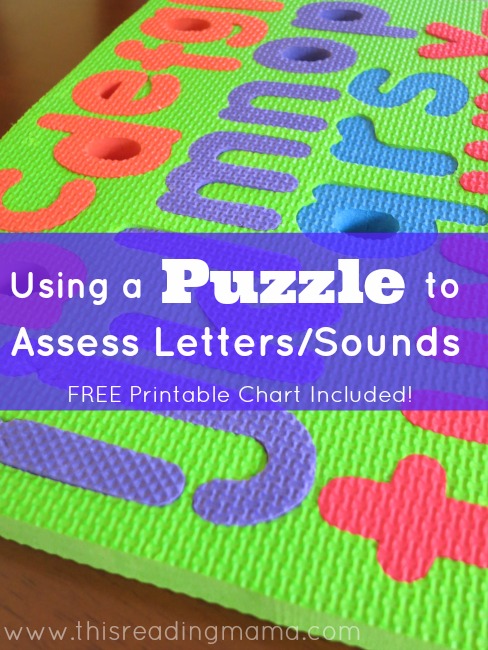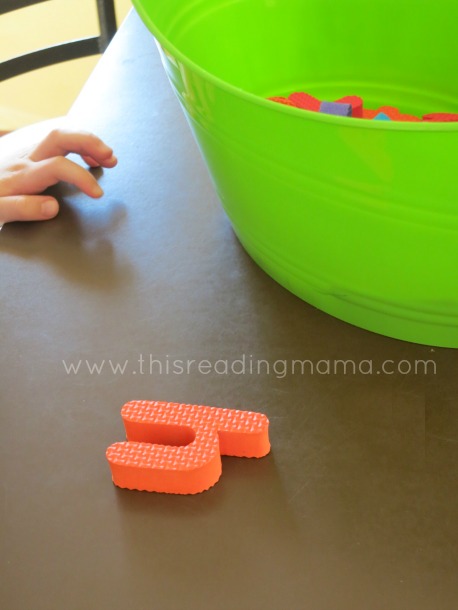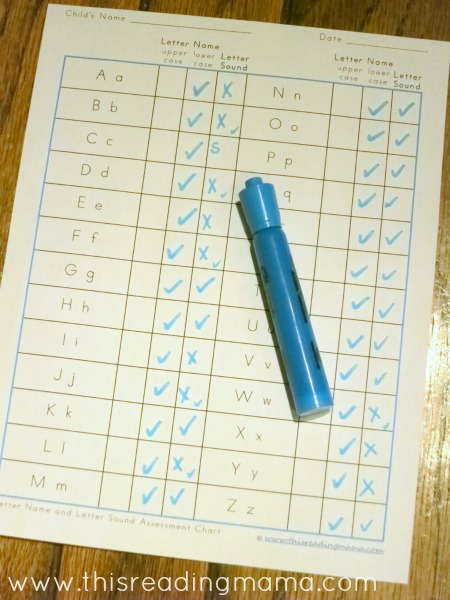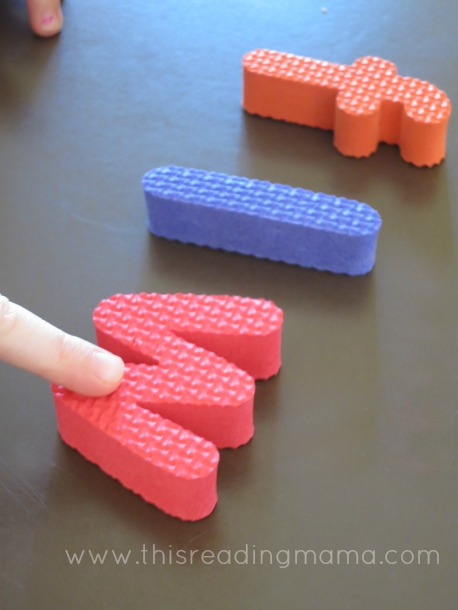 MBug is now a little over 3.5 years old! Since she was a young toddler, she’s been surrounded by letters and their sounds in many different ways. We began working through letter sounds {one sound a week}, starting this past September, taking a break here and there for seasonal fun with my Pre-K/K Packs. As I’ve observed her in every day settings, I began to notice that she was showing mastery over more letters/sounds than the ones we had studied.
MBug is now a little over 3.5 years old! Since she was a young toddler, she’s been surrounded by letters and their sounds in many different ways. We began working through letter sounds {one sound a week}, starting this past September, taking a break here and there for seasonal fun with my Pre-K/K Packs. As I’ve observed her in every day settings, I began to notice that she was showing mastery over more letters/sounds than the ones we had studied.
I knew starting our letter sound work after Christmas break would be more beneficial if I knew exactly what she already knew/needed to know about letter sounds. This way, I can move on the the letters sounds she really needs to work on, while reviewing the ones she already knows.
Using a Puzzle to Assess Letters and Letter Sounds
So, I pulled out an ABC puzzle {I bought mine at the $1 store years ago as a classroom teacher} to assess her lower case letters and letter sounds. While we have several ABC puzzles in our home, I chose a lower case letter puzzle because, even though she has shown mastery over all her upper case letters, I wanted to see if she knew all her lower case letter names.
 I pulled out all the lower case letters from the puzzle and placed them in a bucket. I made sure they were all mixed up and not in alphabetical order. I did not use the base of the puzzle because I did not want her to have the support of seeing the letters in alphabetical order. I wanted to know what she could do on her own.
I pulled out all the lower case letters from the puzzle and placed them in a bucket. I made sure they were all mixed up and not in alphabetical order. I did not use the base of the puzzle because I did not want her to have the support of seeing the letters in alphabetical order. I wanted to know what she could do on her own.
 One at time, she pulled out a letter and layed it on the counter. I asked two questions:
One at time, she pulled out a letter and layed it on the counter. I asked two questions:
- “What letter is this?”(letter recognition)
- “What sound does it make?” (letter sounds)
 On a separate sheet of paper, {link for the free printable can be found at the end of the post} I noted if she was able to identify BOTH the letter name and letter sound. {Note that with the letter c, she was only able to make the soft /s/ sound, so I wrote an s. I explain the smaller check marks in the letter sound box after the next image.}
On a separate sheet of paper, {link for the free printable can be found at the end of the post} I noted if she was able to identify BOTH the letter name and letter sound. {Note that with the letter c, she was only able to make the soft /s/ sound, so I wrote an s. I explain the smaller check marks in the letter sound box after the next image.}
 Just out of curiosity, I provided a little extra support to see how she would respond. I pulled out three of the letters for which I noted she did not know the sound {f, l, and w}. I asked, “Which letter makes the w sound?” while making the sound of w. I did this for a couple other sets of letters. I noted by placing a small check mark in the letter sound box if she was able to do this with success when provided this extra support for each letter.
Just out of curiosity, I provided a little extra support to see how she would respond. I pulled out three of the letters for which I noted she did not know the sound {f, l, and w}. I asked, “Which letter makes the w sound?” while making the sound of w. I did this for a couple other sets of letters. I noted by placing a small check mark in the letter sound box if she was able to do this with success when provided this extra support for each letter.
How Often Should We Assess Letters and Letter Sounds?
Ideally, we are observing kids daily. They show us through their play, their questions, and answers to our questions what they do and do not know. Daily observations are a type of assessment and the information we can gather from them is vital! Formal assessments are a great tool to use once a month to once every three months. They can actually be a more accurate record of what the child really does know because the child is asked to perform without support or clues.
Download the FREE Printable Chart for to help you assess letters and letter sounds HERE!
More Resources You May Like:
- Phonics BINGO Pack {includes a game for beginning letter sounds}
- Reading the Alphabet– a FREE 31-week reading curriculum for kids who know letters and the majority of letter sounds
- 26 Ways to Learn the ABC’s
- Beginning and Ending Sounds Activities
- Magnetic Build-A-Word Sheets
You share such great information for those wanting to teach at home.
I bought that same puzzle from the dollar store a few weeks ago and can’t wait to use it – it makes a great travel toy since it is so small and fits into luggage easily. Thanks for your ideas 🙂